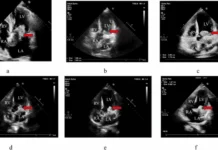The early 20th century saw plastic being hailed as a huge success. However, in recent years it has gone from being considered a hero to a complete zero. Due to its non-degradable properties and role in climate change, people are moving more and more towards an eco-friendly future which means, no more plastic.
Microplastics – Not just found in the ocean
Microplastics are plastic fragments less than 5mm or 0.2 inches in diameter while nanoplastics are less than 0.050mm in diameter. Previous researches have linked exposure of microplastics and nanoplastics in humans and animals to infertility, cancer, and inflammation.
On average around eight million tons of plastic waste ends up in the ocean. It is estimated that this ocean plastic may end up killing millions of marine animals every year. Marine animals, however, are not the only ones in danger. Traces of plastics have also been found in humans. A pilot study conducted in 2018 found traces of microplastics in human feces.
There’s evidence that plastic is making its way into our bodies, but very few studies have looked for it there. And at this point, we don’t know whether this plastic is just a nuisance or whether it represents a human health hazard.
Charles Rolsky, Ph.D
For the first time, scientists at Arizona State University have discovered the presence of microplastics and nanoplastics in the organs and tissues of humans.
For their study, the team of scientists took samples from the lungs, liver, spleen, and kidneys of 47 deceased people that were part of a tissue bank used for studying neurodegenerative diseases. The samples were then analyzed using mass spectrometry.
Bisphenol A (BPA), a precursor to plastics usually used in food containers, was found in all 47 samples. The team also managed to develop a new technique that could help researchers identify, extract, and analyze a dozen types of plastic from human tissues.
We never want to be alarmist, but it is concerning that these non-biodegradable materials that are present everywhere can enter and accumulate in human tissues, and we don’t know the possible health effects
Varun Kelkar
Scientists hope that by conducting epidemiological studies we will be better able to understand the potential health risks of accumulation of microplastics in our systems.
References:
Micro- and nanoplastics detectable in human tissues. (n.d.). Retrieved August 25, 2020, from https://www.acs.org/content/acs/en/pressroom/newsreleases/2020/august/micro-and-nanoplastics-detectable-in-human-tissues.html
Schwabl P, Köppel S, Königshofer P, et al. Detection of Various Microplastics in Human Stool: A Prospective Case Series. Ann Intern Med. 2019;171(7):453-457. doi:10.7326/M19-0618




